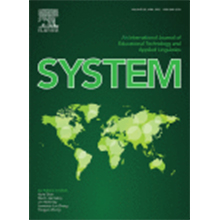본문
L2 pragmatic comprehension of aural sarcasm: Tone, context, and literal meaning

By prof. Josephine Lee,
English Education
Research Profile
leejosephine@ewha.ac.kr
Sarcasm is used to display emotional attitudes such as criticism and humor and is commonly found in various cultures (Leggitt & Gibbs, 2000; Toplak & Katz, 2000). The comprehension of sarcasm reflects the higher-order pragmatic abilities of humans as it requires the listener to integrate various information sources and reach an understanding that contradicts the literal message (Akimoto et al., 2014). For second and/or foreign language (L2) learners, comprehending conversational implicature requires processing effort, but even greater challenges arise due to the complex nature of sarcasm.
L2 pragmatics is an expanding field but research on pragmatic comprehension—particularly comprehension of aural sarcasm—remains relatively scant. Also, a handful of studies that have investigated L2 sarcasm exist, but they are limited to simple assessments of L2 learners’ comprehension abilities (Bouton, 1992, 1994; Shively, Menke, & Manz´on-Omundson, 2008; Yamanaka, 2003) and qualitative reports of the learners’ difficulties (Kim, 2014). This study contributes to this body of research by drawing on L1 findings that identify the core markers of aural sarcasm (Rockwell, 2000, 2007; Voyer et al., 2016; Voyer & Techentin, 2010; Voyer & Vu, 2016; Woodland & Voyer, 2011) and examining how the interplay of these cues affects the perception of L2 sarcasm in terms of both comprehension speed and accuracy. Specifically, the interaction of three central factors—verbal (literal meaning), non-verbal (tone of voice), and contextual cues—were analyzed to determine whether one component takes precedence over another and whether learners of different L2 proficiency levels display distinctive patterns in their comprehension of a sarcastic utterance.
Fifty-one intermediate and advanced Korean EFL learners had their comprehension of English sarcasm assessed by completing a multimedia pragmatic listening test. By replicating Voyer and Vu’s (2016) design, the test items were varied according to the type of literal meaning (positive/negative), context (positive/negative), and intonation (sincere/sarcastic). The results indicate that both proficiency level groups responded more accurately and quickly to congruent pairs (i.e., negative context with a sarcastic tone or positive context with sincere tone) than incongruent pairs (i.e., positive context with a sarcastic tone or negative context with sincere tone). A proficiency effect was evident where advanced learners were more accurate but not necessarily faster than intermediate learners. In terms of literal meaning, both proficiency level groups were significantly more accurate and faster at responding to positive literal meaning. Lastly, an interaction effect was present among literal meaning, congruency, and proficiency, highlighting the interplay of context, intonation, and literal meaning in comprehending L2 sarcasm across different L2 proficiency levels.
These findings underscore that although advanced-level learners were more accurate in comprehending sarcasm than intermediate-level learners, the higher-level participants were not necessarily faster than their lower-level counterparts. Hence, this study highlights that especially for foreign language learners, more opportunities for exposure and repeated practice of inferential processing should be provided to facilitate the learner’s fluency in comprehending L2 sarcasm. Another noteworthy finding is that when processing load increases, as in the incongruent items, L2 pragmatic comprehension may suffer. Thus, it is not only important to expose learners to authentic materials that present sarcasm in various forms, but it is also crucial to bring the learner’s attention to the interplay between tone and context and to discuss interpretations, especially for circumstances when the situational contrast may not be as salient. With regards to literal meaning, the Korean EFL participants were less able to comprehend sarcasm with negative literal meaning than with positive. This finding suggests that teachers should consider that sarcasm may have L2-specific features that are not readily accessible by the learner. Lastly, the interaction across literal meaning, congruency, and L2 proficiency implies that different approaches of presenting L2 sarcasm should be applied for each proficiency level. For the Korean EFL learners in this study, those at intermediate level struggled when comprehending sarcasm with negative literal meaning. Thus, lower-level students would largely benefit from awareness-raising activities that indicate L1 and L2 differences in pragmatic form-functions. More advanced students would also benefit from such activities, although emphasizing tone and context as markers of sarcasm—and more importantly, the opposition between these cues—would improve sarcasm perception for learners at this level.
The present study is one of the first attempts to examine L2 learners’ comprehension of sarcasm based on factors informed by L1 research. It is clear that the combination of context, tone of voice, and literal meaning offers powerful clues to understanding a speaker’s sarcastic intent, and it is also one that causes difficulty for L2 learners in their pragmatic comprehension of sarcastic utterances. These findings highlight what L2 listeners should notice and prompts L2 instruction that raises learners’ awareness of these identified cues to improve interpersonal communication.
* Related Article
Koh, J., Lee, S., & Lee, J. M. (2022). L2 pragmatic comprehension of aural sarcasm: Tone, context, and literal meaning. System, Volume 105, April 2022, 102724
